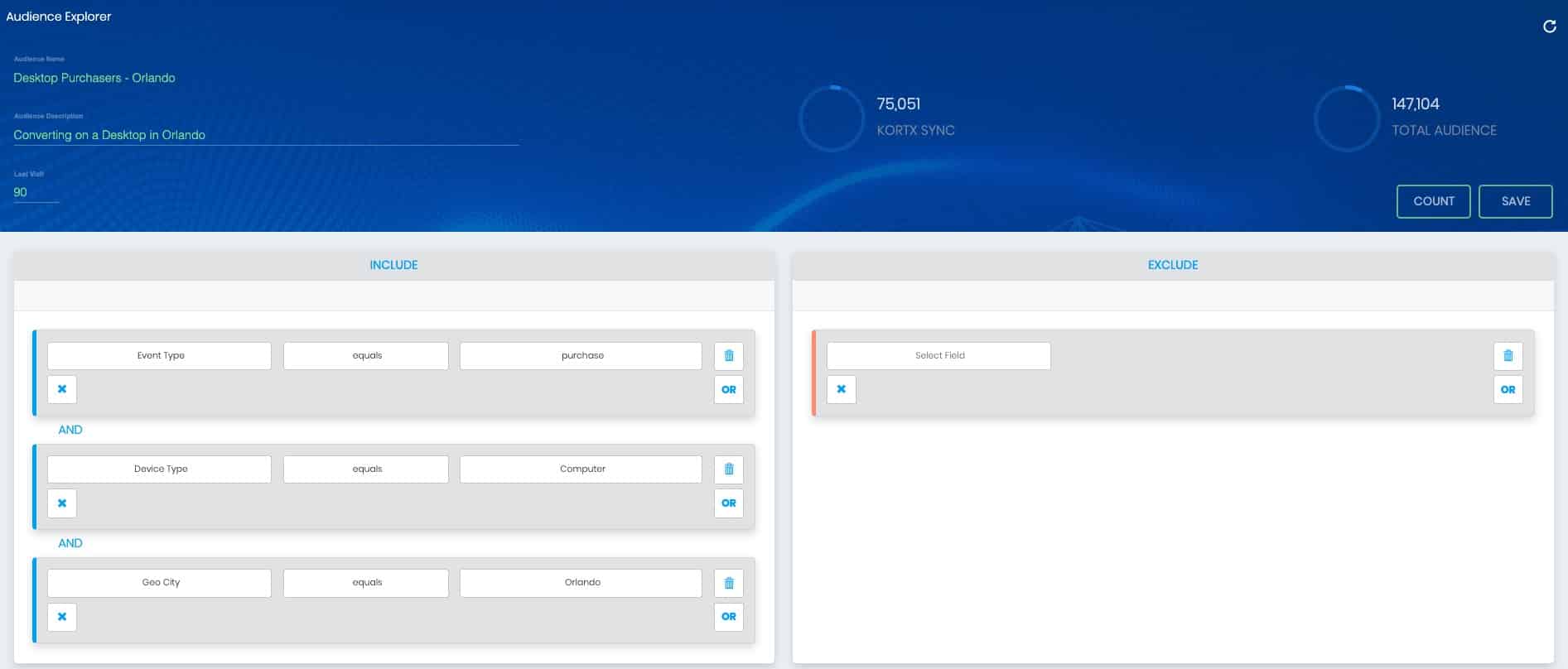What if your website does not have a defined user journey? What if it lacks digital touch points, restricting marketing specialists from aggregating data and analyzing user interaction to develop an understanding of the path to purchase for your customers? Your site may only contain simple examples of your products for purchase and an order page where those can be selected.
Without individual product pages containing touch points where a customer can dig deeper into the variables of the product (i.e. ingredients for QSR menu items), a brand can still segment their shoppers based on the contents of their cart at purchase (or abandonment). For granular segments, the content of their cart can be coupled with additional profile and event properties using Boolean rules to further develop unique groups of customers to target or model.
“Your website is your digital store. It is a repository of millions of customer attributes. These attributes can be reengineered to empower your marketing team, amplify your brand, solidify your market presence and drive new, long-term revenue.”
Capitalizing on QSR’s High Volume Interactions
QSR items can be purchased daily and if national in scope, they can provide the scale of user interactions (purchases) that are essential for building large pools of customers for segmentation and targeting. High-level segments can include bucketing by product purchased, customer lifetime value (by product(s) or overall), device type, operating system, browser, geo location, and/or UTM parameters. As the number of stored profiles increase, we can then begin to apply Boolean logic to our high-level segments via Axon. For example, Axon data may show that Samsung phones running on Android 9.0 Pie using Chrome yield the best conversion rate. This elite segment of purchasers can then be built as a separate audience and deployed to your DSP for activation.
Additionally, single or multi-variable segments can be leveraged for predictive modeling, allowing a brand’s prospecting to be driven by the retooled Axon data of their choice. A segment of all product purchasers is broad and inclusive, providing the largest pool of attributes to be expanded upon. Brands without a defined purchase path can use this segment to analyze the attributes of all their purchasers and model those for new customer acquisition campaigns.

Loyalty Deserves – And Demands – Personalization
Based on the frequency of purchases and the large number of products available, QSR’s marketing teams can develop personalized creative, which is key from a targeting and loyalty standpoint. Brands can build segments utilizing lifetime spend per item(s) and build product specific creatives, allowing them to better manage their customers’ digital advertising experience. They could build a segment of purchasers who converted in the last 24 hours, or a segment of lapsed purchasers >30 days old, then deliver a promo code, providing the customer with what they want and driving brand loyalty. Promo codes or special offers can be dynamically delivered based on the segment the user resides in.
Personalization should also equal localization (the process of making something local in character). Axon segmentation capabilities can help a national brand adjust their messaging by region and locality, empowering their creative teams to develop content that is local and impactful. A client may want segments of converters who a) purchased in the last 60 days; b) converted on a desktop; and c) live in 12 metropolitan areas. Instead of building one segment and targeting those geos in the platform with the same creative, they can create 12 segments and develop content unique to each location.

Your website is your digital store. It is a repository of millions of customer attributes. These attributes can be reengineered to empower your marketing team, amplify your brand, solidify your market presence and drive new, long-term revenue. The marketing technologists at KORTX have realized this vision thanks to the capabilities available through our proprietary platform, Axon.
